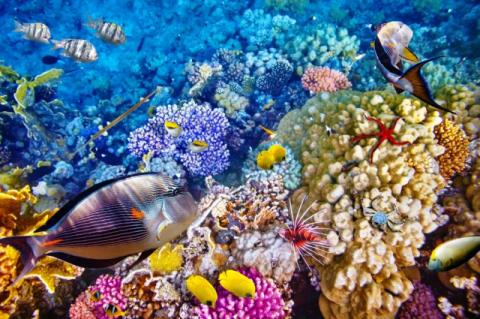
Great Barrier Reef Herpes Infection
The Great Barrier Reef, the world’s largest coral reef system, is going through a tough time right now. Thanks to man-made climate change, and in part a particularly strong El Niño event, it is undergoing a bleaching event; the coral has become “stressed” and is shedding off its helpful photosynthetic algae, losing its beautiful color as a result. Unfortunately, a new study in the journal Frontiers in Microbiology has some more bad news: It also appears to be severely infected with a herpes-like virus.
Viruses have been found within coral colonies before, either taking advantage of the animal without negatively affecting it, or parasitically, although much about their role in these ecosystems remains unknown. With the Great Barrier Reef set to suffer irreversible damage by 2030 if current warming trends continue, assessing any negative impact viruses have on coral reefs is of paramount importance.
The research team examined samples of the coral Acropora aspera in both its natural habitat and in the laboratory, putting it through various stresses including high temperatures, intense UV light exposure, and simulations of heavy rainfall – all factors known to stress corals out and cause them to ultimately bleach.
Upon bleaching, the corals were found to contain high loads of virus-like particles (VLPs), non-infectious remnants of a viral infection. By looking at the shapes and sizes of these nanometer-sized particles, the team concluded that most of them resembled viruses belonging to several known families, including the herpesvirus, retrovirus and megavirus groups.
The herpes-like VLPs were particularly abundant. They appeared to be similar in size and shape to the herpes virus, but shared very little in common with its genome.

